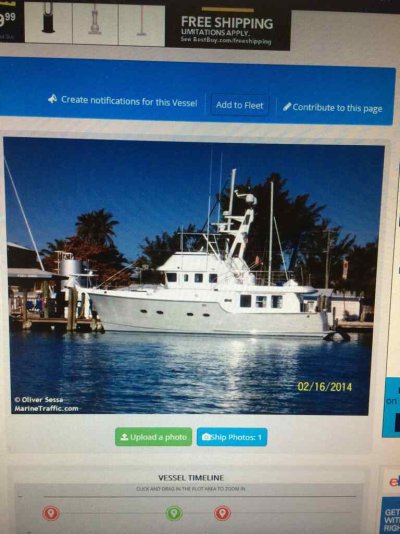cardude01
Guru
- Joined
- Nov 26, 2012
- Messages
- 5,290
- Location
- USA
- Vessel Name
- Bijou
- Vessel Make
- 2008 Island Packet PY/SP
So I was poking around the old interweb, researching AIS, and I got directed to marinetraffic.com. Started poking around and saw this boat. Looks familiar....

Also had this info on last known port. Can you turn this thing off if you don't want everyone to know where you are and where you have been?

?

Also had this info on last known port. Can you turn this thing off if you don't want everyone to know where you are and where you have been?

?
